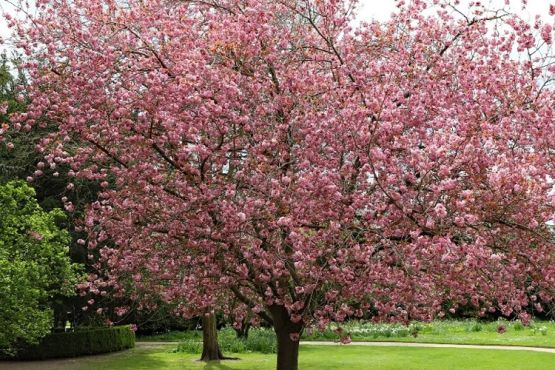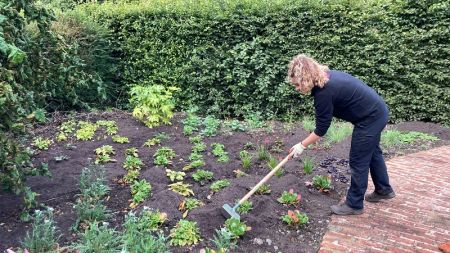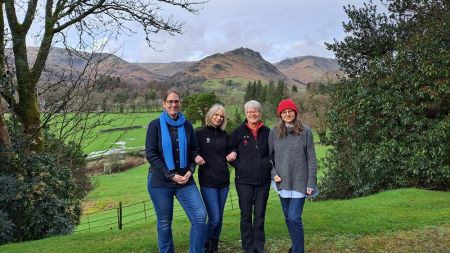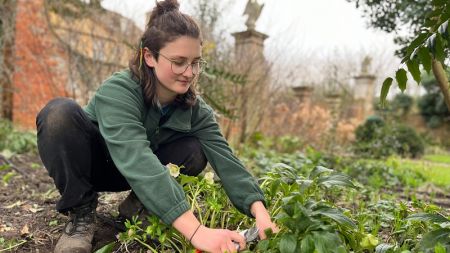We’re bringing blossom back

The first ever #BlossomWatch Day took place in 2021. This year the National Trust celebrated this fleeting seasonal spectacle once again – with millions viewing images of spring blossom, and thousands sharing pictures. #BlossomWatch, learning from the Japanese tradition of ‘Hanami’, aims to help people across the UK appreciate the fleeting beauty of spring blossom.
After the dark days of winter, there can often be a desire to grab these little moments of joy. That’s why the National Trust encourages people to take a moment for their own wellbeing and take time to enjoy ‘nature’s confetti’ during the spring.
This year, there was a relatively mild winter with little snow, and a warm and dry March saw blossom emerge early in many areas around the country.
A sharp dip in temperatures at the end of the month to -9.1 degrees Celsius – and some snowfall (10cm measured at Copley in Durham on 31 March) – caused some delicate blossoms like magnolia to become ‘burnt’ by the harsh conditions and therefore unable to reach their full glory.
But with temperatures gradually rising to a more seasonal norm, spring was back on track, and many people shared pictures of blossom on social media using #BlossomWatch.
Whether in parks, along the roadside, in their own gardens or enjoying in the countryside, we encourage everyone to record blossom by sharing their experiences and joy brought on by blossom, wherever they live.
Andy Jasper, Head of Gardens & Parkland at the National Trust said: “This has been a particularly good year to enjoy blossom in our gardens. The lack of winter snow and gentle start to spring with the warm, dry and relatively settled March saw some varieties of flowering cherry blooming early, and despite some sharp frosts in late March which affected magnolia in some parts of the country, there was still much more blossom to enjoy.”
Some of the stunning images shared on social media, along with personal dedications, will also feature in adverts in 17 UK cities, from Bournemouth to Belfast and Newcastle, and Cardiff to London.
One of the images chosen to feature in adverts in Manchester was taken in Preston by Sarah Lawrenson, 47. She said “I was inspired to start looking for wildflowers during the first Covid lockdown in 2020, to bring interest to my daily exercise with my teen sons.
“The future seemed so uncertain that I found great comfort in seeing the seasons pass through my love of both nature and photography.
“Blossom itself brings so much promise of warmer, brighter times to come, so #BlossomWatch was a fantastic opportunity to help people enjoy this wonderful time and share the joy and positivity.”
Another of the chosen images came from Agne Galdikaite, 28, from Teddington, whose photograph taken in Kingston-upon-Thames will be used in London. She commented “It was a beautiful early spring day and I decided to grab my camera and take a walk around the local park.
“I remember seeing several Comma butterflies sipping nectar from the blossoms and just admiring their fragility and overall beauty. Early blossoms are a sign of nature awakening and offering essential nourishment to the species such as butterflies or bees that emerged from cold winter. I’m happy to be part of #BlossomWatch and hoping this campaign will inspire many others to go outside and truly appreciate the joy of nature.”
Franz Zubieta Mariscal’s image taken at the University of Nottingham campus will appear in the city, and his chosen dedication references the hostilities in Ukraine. He said “For me, blossom represents the main virtue of mankind: resilience. Even if suffering is an inevitable feature of all existence, it hides the potential for transformation. So, there is always a point at which cold becomes light, and darkness turns into colour.
“Being part of #BlossomWatch means being fully aware of what happens around us and discovering that there is always an answer out there.”
We care for hundreds of trees that blossom in the spring. Over half of the orchards in England and Wales have been lost in the last century and they make a vital habitat for birds, bees and badgers. So, we’re working with partners and communities, to restore blossom for everyone, and give urban places access to greener spaces with blossom trees.
You can share images of any blossom in bloom using #BlossomWatch. Or to donate towards the charity’s blossom tree planting ambitions please visit www.nationaltrust.org.uk/blossom-watch
Categories
- Apprenticeships (47)
- Building Surveying (3)
- Business Services (2)
- Catering (1)
- Communications and Marketing (2)
- Conservation (10)
- Countryside (8)
- Curatorship (3)
- Diversity (1)
- Estate Management (4)
- Finance (2)
- Food and Beverage (7)
- Fundraising (8)
- Gardening (11)
- General Management (2)
- Governance (2)
- Heritage Building Crafts (3)
- Holidays (3)
- House and Collections (4)
- IT (6)
- Membership (1)
- People and Legal (3)
- Projects and Programmes (5)
- Retail (2)
- This is us (6)
- Visitor Experience (3)
- Volunteer and Community (3)
- Volunteering (1)
- Work Experience (1)
- Young People (6)


